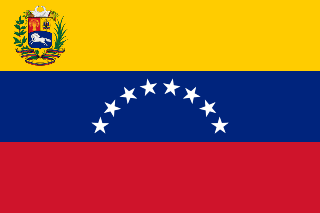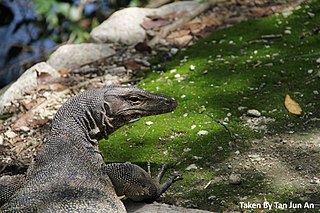| Oreosaurus luctuosus | |
|---|---|
| Scientific classification | |
| Kingdom: | Animalia |
| Phylum: | Chordata |
| Class: | Reptilia |
| Order: | Squamata |
| Family: | Gymnophthalmidae |
| Genus: | Oreosaurus |
| Species: | O. luctuosus |
| Binomial name | |
| Oreosaurus luctuosus (Peters, 1863) | |
| Synonyms | |
| |
Oreosaurus luctuosus, the lightbulb lizard, is a species of lizard in the family Gymnophthalmidae. [1] It is endemic to Venezuela.

Lizards are a widespread group of squamate reptiles, with over 6,000 species, ranging across all continents except Antarctica, as well as most oceanic island chains. The group is paraphyletic as it excludes the snakes and Amphisbaenia; some lizards are more closely related to these two excluded groups than they are to other lizards. Lizards range in size from chameleons and geckos a few centimeters long to the 3 meter long Komodo dragon.

Gymnophthalmidae is a family of lizards with at least 250 species, sometimes known as spectacled lizards or microteiids. They are called 'spectacled' because of their transparent lower eyelids, so they can still see with closed eyes. Like most lizards, but unlike geckos, these eyelids are movable. The Alopoglossidae have been recently moved from this family.

Venezuela, officially the Bolivarian Republic of Venezuela, is a country on the northern coast of South America, consisting of a continental landmass and a large number of small islands and islets in the Caribbean Sea. The capital and largest urban agglomeration is the city of Caracas. It has a territorial extension of 916,445 km2. The continental territory is bordered on the north by the Caribbean Sea and the Atlantic Ocean, on the west by Colombia, Brazil on the south, Trinidad and Tobago to the north-east and on the east by Guyana. The Venezuelan government maintains a claim against Guyana to Guayana Esequiba, an area of 159,542 km2. For its maritime areas, Venezuela exercises sovereignty over 71,295 km2 of territorial waters, 22,224 km2 in its contiguous zone, 471,507 km2 of the Caribbean Sea and the Atlantic Ocean under the concept of exclusive economic zone, and 99,889 km2 of continental shelf. This marine area borders those of 13 states. The country has extremely high biodiversity and is ranked seventh in the world's list of nations with the most number of species. There are habitats ranging from the Andes Mountains in the west to the Amazon basin rain-forest in the south via extensive llanos plains, the Caribbean coast and the Orinoco River Delta in the east.



